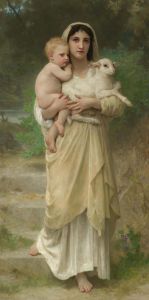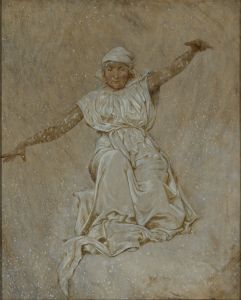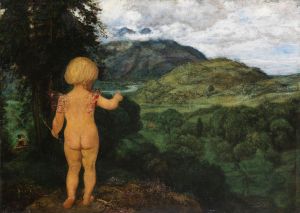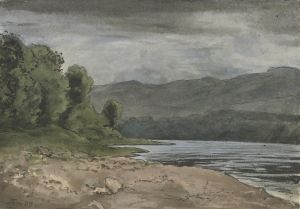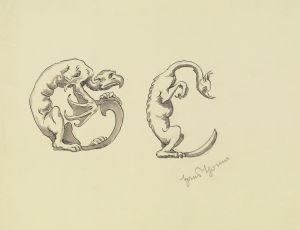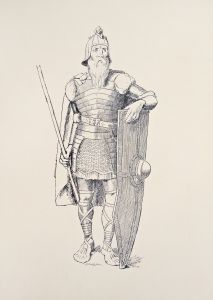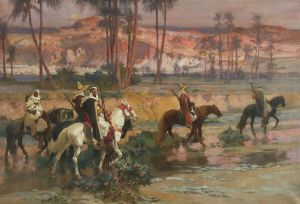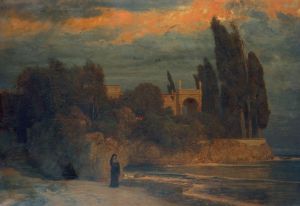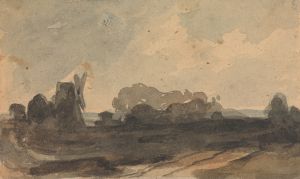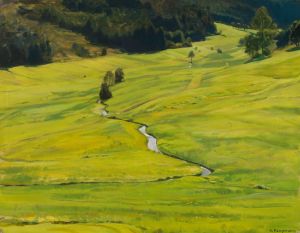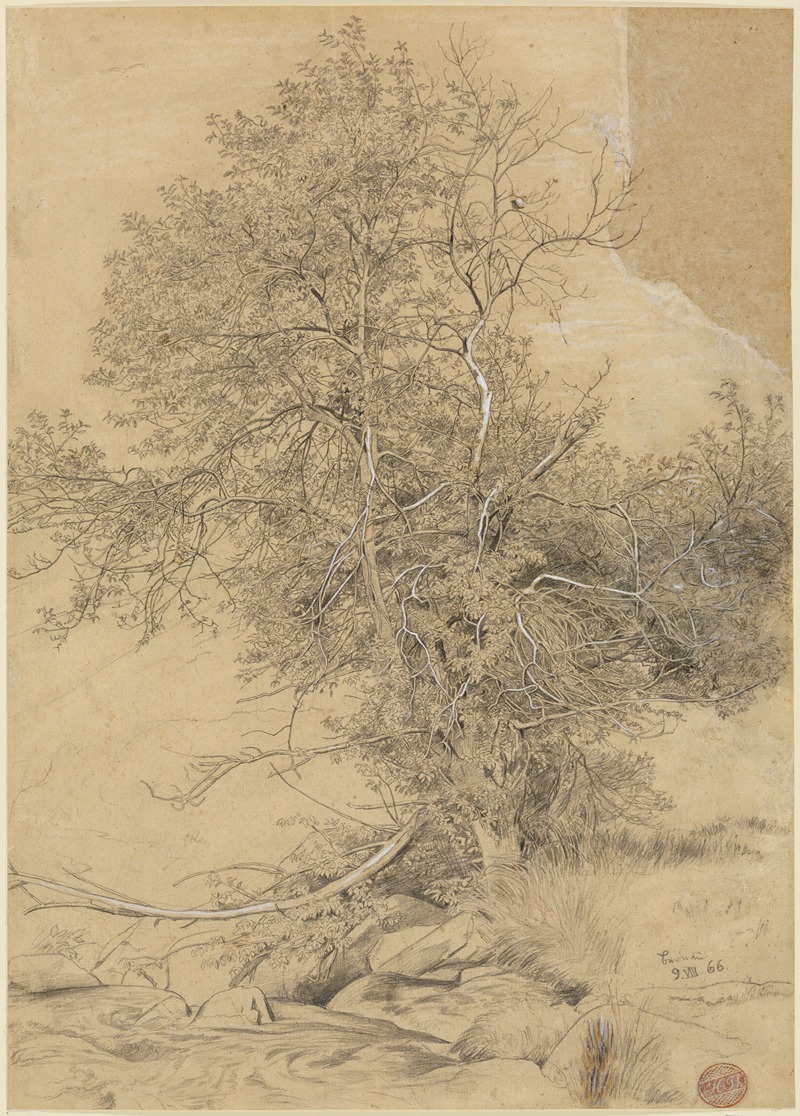
Weide am Bach
A hand-painted replica of Hans Thoma’s masterpiece Weide am Bach, meticulously crafted by professional artists to capture the true essence of the original. Each piece is created with museum-quality canvas and rare mineral pigments, carefully painted by experienced artists with delicate brushstrokes and rich, layered colors to perfectly recreate the texture of the original artwork. Unlike machine-printed reproductions, this hand-painted version brings the painting to life, infused with the artist’s emotions and skill in every stroke. Whether for personal collection or home decoration, it instantly elevates the artistic atmosphere of any space.
Hans Thoma was a German painter born on October 2, 1839, in Bernau in the Black Forest, and he became one of the prominent figures in the German art scene during the late 19th and early 20th centuries. Thoma's work is often associated with the Romantic and Symbolist movements, and he is known for his landscapes, portraits, and genre paintings that reflect a deep connection to nature and a sense of nostalgia for rural life.
One of Thoma's notable works is "Weide am Bach," which translates to "Willow by the Brook" in English. This painting exemplifies Thoma's skill in capturing the serene beauty of the natural world. Although specific details about the creation date of "Weide am Bach" are not widely documented, it is consistent with Thoma's broader body of work, which often features idyllic landscapes and scenes from nature.
"Weide am Bach" depicts a tranquil scene where a willow tree stands by the side of a gently flowing brook. The composition is characterized by its harmonious balance and the subtle interplay of light and shadow, which Thoma skillfully employs to create a sense of depth and atmosphere. The painting reflects Thoma's admiration for the natural environment and his ability to convey the peacefulness and simplicity of rural settings.
Thoma's technique in "Weide am Bach" showcases his meticulous attention to detail and his use of a muted color palette, which enhances the painting's calming effect. The willow tree, with its gracefully drooping branches, serves as the focal point of the composition, drawing the viewer's eye towards the brook that meanders through the landscape. The overall effect is one of tranquility and reflection, inviting viewers to pause and appreciate the quiet beauty of nature.
Hans Thoma's work, including "Weide am Bach," is often celebrated for its ability to evoke a sense of nostalgia and a longing for a simpler, more harmonious existence. His paintings frequently incorporate elements of German folklore and mythology, and he was influenced by the works of earlier Romantic painters, such as Caspar David Friedrich. Thoma's art also reflects his personal experiences and his deep connection to the Black Forest region where he was born and raised.
Throughout his career, Thoma received recognition and acclaim for his contributions to the art world. He held various teaching positions and was appointed as the director of the Karlsruhe Academy of Fine Arts. His work was exhibited in numerous galleries and exhibitions, and he became a respected figure among his contemporaries.
Hans Thoma passed away on November 7, 1924, in Karlsruhe, Germany, leaving behind a legacy of art that continues to be appreciated for its beauty and emotional depth. "Weide am Bach" remains a testament to Thoma's ability to capture the essence of the natural world and to convey a sense of peace and serenity through his art.





